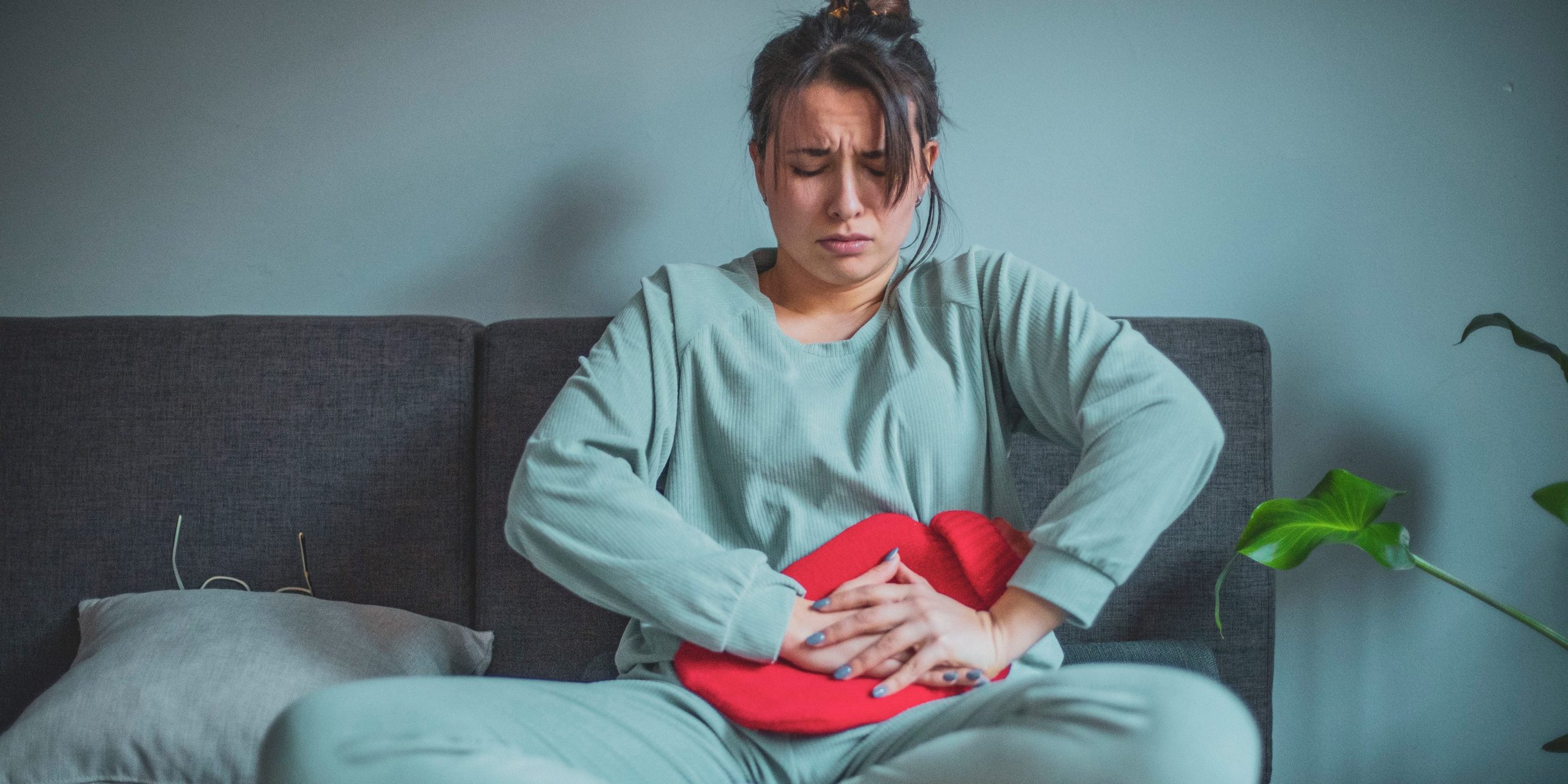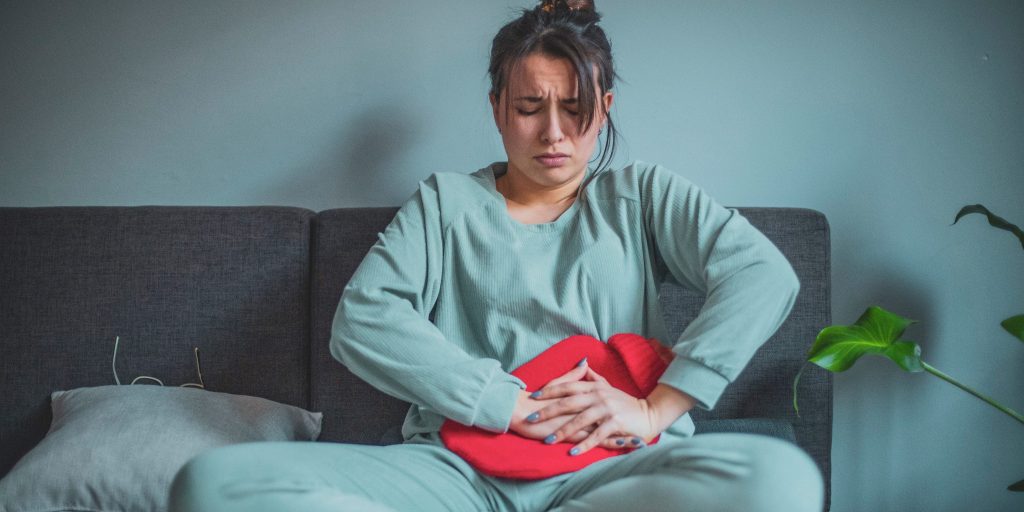
LukaTDB/ Getty Images
- Period cramps can come along with symptoms like nausea, weakness, headache, and a heavy flow.
- Though period cramps are normal, extreme cramps could signal issues like fibroids or endometriosis.
- Remedies like NSAIDs, heating pads, exercise, or even having an orgasm can help provide relief.
- Visit Insider's Health Reference library for more advice.
It's estimated that about 80% of women have experienced painful periods at some point in their life. Cramps can range from mild to severe depending on the individual, and they may be associated with other physical symptoms, as well.
Symptoms of period cramps
Menstrual cramps cause pain in your pelvis, and they may start a day or two before your period begins, or within the first few days of your period, says Heather Johnson, MD, OB/GYN at Advantia Health's Reiter, Hill and Johnson Practice.
The pain you experience may be dull and achy or it may be throbbing. Additionally, it might radiate to the surrounding areas of your lower back and thighs.
While cramps may occur on their own, Johnson says they typically occur with other symptoms such as:
- Nausea
- Headache
- Weakness
- Heavier menstrual bleeding
What causes period cramps?
Cramps happen because your body releases hormone-like substances called prostaglandins, which induce contractions of the uterine muscle, says Christine Vo, MD, FACOG, OB/GYN at AristaMD and Methodist Women's Hospital.
These contractions of the uterus are what helps your body expel the lining of the uterus during your period.
When to call your doctor
Primary dysmenorrhea, or the painful cramps that occur during menstruation, is normal. However, there's also secondary dysmenorrhea, which means there is another culprit behind your painful periods, says Johnson.
"If your cramping pain isn't cyclical, or if it has developed later in life, it could be from a structural issue. In these cases, you should absolutely visit your gynecologist for an evaluation and further testing," says Johnson.
These structural issues include:
- Uterine fibroids: These are typically benign growths inside the uterus, meaning non-cancerous.
- Endometriosis: This is when tissue that typically grows inside your uterus grows outside of the organ.
- Adenomyosis: This is when uterine tissue ends up growing inside the uterus' muscular wall.
Insider's takeaway
If your period cramps are consistent and haven't changed much over the years, it's likely that they are normal. However, if painful periods are new for you, or if your cramps are impacting your day-to-day life and can't be treated easily with over-the-counter meds or home remedies, you should see your OB/GYN for help so you can be on your way to more comfortable periods.
